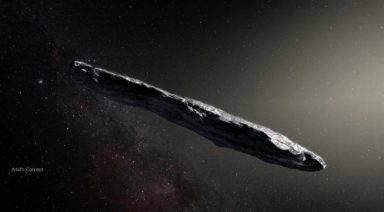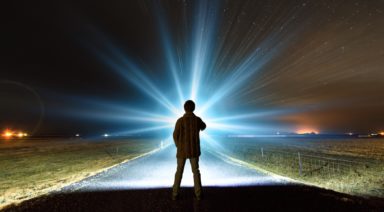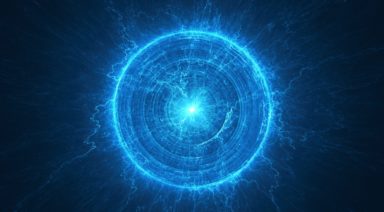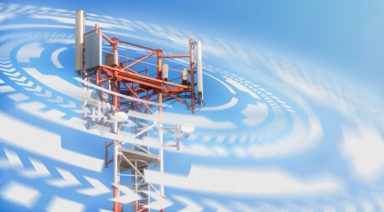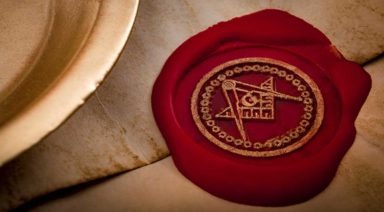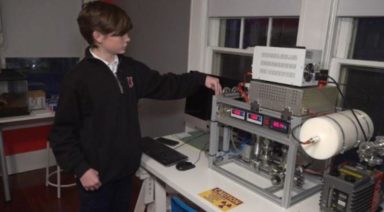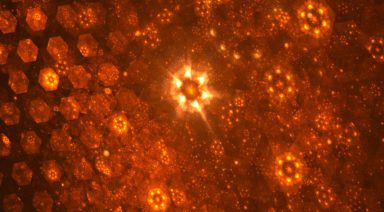Scientists Have Found Evidence of a 9th, Super-Earth Sized Planet
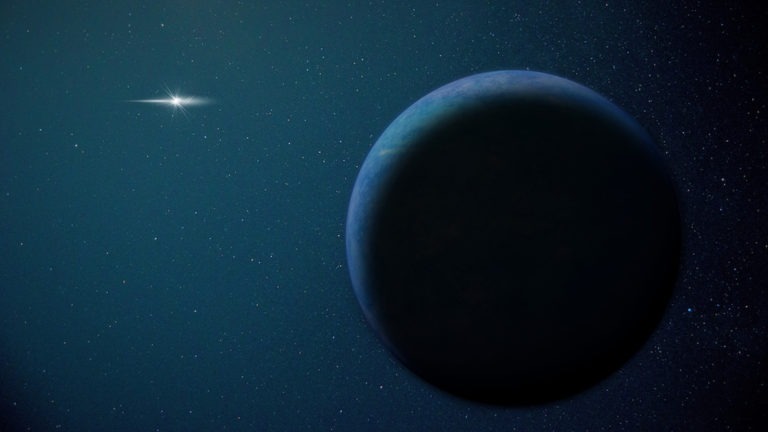
For years there has been speculation as to whether a ninth planet exists beyond the currently known threshold of our solar system. This planet has now been discovered and it’s 20,000-year orbital period may explain why we’ve had trouble finding it.
By observing the strange elliptical orbits of a number of large asteroids, scientists have determined that a massive, rocky planet must exist in the outer reaches of our solar system. They found that these asteroids have such elongated orbits beyond the Kuiper Belt, the ring of bolides beyond Neptune, that there must be a large planetary body pulling them out.
A newly discovered asteroid, 2015 BP519, added to the evidence from a group of what astronomers call Trans-Neptunian Objects, that swing out in strange directions. And though astronomers haven’t pinpointed the planet, it is the most plausible explanation for these TNOs’ orbital paths.
Theories of this Planet Nine, or what some have referred to as Nibiru, have sparked conspiracies for decades, including many apocalyptic ones that (thankfully) never came to fruition. But the latest evidence of a real ninth planet (sorry, Pluto) may shed some light on how it affects Earth.
Thought to be orbiting at 500 times the distance between the Earth and the sun, Planet Nine would be nearly two-thirds the size of Neptune, making it the fifth largest planet in the system, or roughly 10 times the size of Earth.
But this planet’s orbit is so far beyond the orbits of the other planets in our solar system, that it would take somewhere between 10,000 and 20,000 years to complete one rotation. The planet is so far away, that if you looked back at Earth from it’s aphelion, you would be seeing light that left seven days prior.
For years it has been a mystery why the inner eight planes of our solar system are tilted 6 degrees off the sun’s equator. But now the influence of Planet Nine’s orbit over the course of billions of years may be the answer.
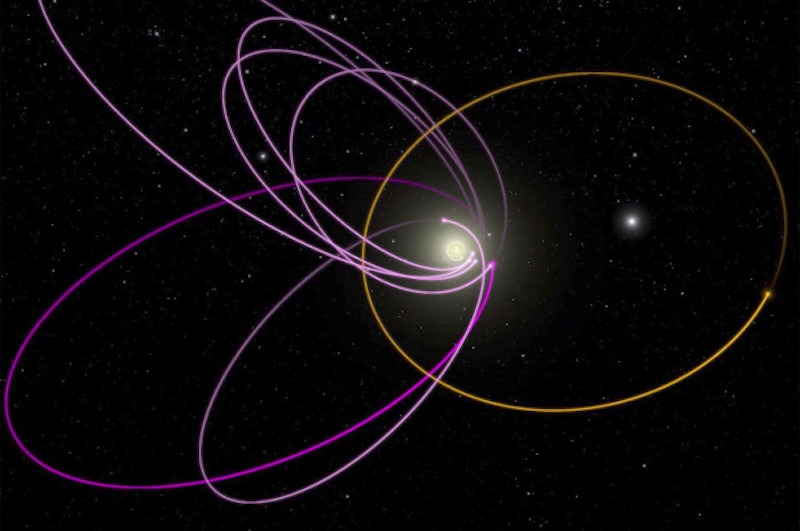
Planet Nine’s orbit in yellow and the asteroids it affects in purple courtesy nypost.com
The estimated size of Planet Nine would also make a lot of sense in that the majority of other solar systems we’ve observed have “super-Earth” sized planets. In fact, it’s the most common sized planet, making our solar system not so different from others out there if this new planet is confirmed.
Whether Planet Nine is currently having, or had, any significant impact on Earth remains to be seen. One of the lead proponents of its existence, Michael Brown, believes the planet poses no threat to our existence, nor does he believe it to have caused any mass extinctions in the past. The planet orbits beyond the Kuiper Belt, but within the Oort Cloud, the next big field of comets, meaning it shouldn’t dislodge and send any icy bodies on a collision course with Earth.
For now, the planet remains theoretical, but highly probable and depending on where it is in its orbit, it could be observed by an amateur or require substantial telescopes at a large observatory. Until then, the tentative discovery shows just how little we know about the surroundings in our own solar system, and how much more we have to learn about the rest of our cosmic neighborhood.
Secret Space Programs and Breakaway Civilizations

In July 2014, on the 45th anniversary of Apollo 11’s moon landing, the government declassified information about a secret space program from the 1950s called Project Horizon. The plan outlined the building of a permanent military base on the moon. Ten to twenty men would be sent with all their supplies and nuclear weapons. The secret moon base would be used for surveillance against and protection from the Soviet Union, and the men would have constant communication with the Earth.
The released documents show that the scientists knew it wasn’t possible to implement the plan, but it was expected to be put in place as technology advanced. Project Horizon never got off the ground. But, that isn’t the end nor the beginning of the story about secret space programs from the past, present and the future.
Secret Space Programs and FDR
In the 1940s, according to recently released documents, President Franklin Delano Roosevelt commissioned a secret space program. He was concerned about how to move large numbers of people in case of nuclear war to avoid massive radiation damage. He thought there might also be a need to escape the ravages of some other global cataclysmic event. Since there was no place on Earth to which large masses of people could be moved, he considered the possibility of moving to locations in space.
At first, moving to the nearest star, Alpha Centauri, seemed like an option. However, the distance made such a plan impossible. As a next step, FDR focused on the moon, Mars or Venus as alternatives to Earth.
Beginning in 1945 at the conclusion of WWII, after President Truman took over, he brought 1,500 German scientists and engineers to the U.S. The scientists, under Hitler’s leadership in Nazi Germany, made advancements in the development of flying saucers, like the Nazi Bell, before and during the war. The German scientists worked at Fort Bliss, near El Paso, Texas, and were assigned the task of developing secret space programs under the project name of Operation Paperclip.
Truman believed the Germans had knowledge of anti-gravity propulsion engines and other spacecraft flight technology. Werner von Braun was the most well-known member of this group, who eventually became the designer of the Saturn V launch vehicle, which was used to propel American astronauts to the moon. He eventually became the director of NASA’s Marshall Space Flight Center and spoke out frequently about the need for space exploration.
Secret space programs are believed to be financed by secret “Black Budget” programs with contributions made by people with great wealth, private contractors and some government agencies. This secret funding keeps the programs from being subject to congressional oversight. Since the early 1960s, the programs have been kept secret even from the president: A memo was found in the newly released documents that said to keep “Lancer,” President Kennedy’s secret service nickname, out of the loop.
Secret Space Programs and Breakaway Civilizations
Secret space programs may have developed Breakaway Civilizations in outer space. Well-respected UFO and space researcher Richard Dolan, defines a Breakaway Civilization as a secret group of technologically advanced people who don’t share their knowledge with the rest of the world. These are essentially the Earth’s elite who have knowledge far above the rest of the world.
These elite may know of an upcoming imminent global geological cataclysm event and are building space bases as shelters for themselves. For example, they could be planning their escape from Nibiru Planet X, which “triggers comet showers” every 27 million years. One of those comets is expected to crash into the Earth and totally destroy it sometime in the not too distant future.
Scotland native, Gary McKinnon, hacked into thousands of government secret files. He found evidence of an anti-gravity propulsion system that traveled at incredible speeds. Also, he found evidence of portal technology that, when coupled with anti-gravity propulsion, would allow space travel to other stars and planets to be accomplished in a short amount of time.
It appears that Einstein’s theory that nothing can travel faster than the speed of light has been debunked. It also appears the Black Budget keeps these secrets even from NASA, since NASA apparently does not have access to anti-gravity technology. It still propels its rockets with fossil fuel.
McKinnon claims he saw nearly 300 photos of structures and civilizations existing on the back side of the moon. He says these structures (alien bases on the moon) are erased out of any photos when they are released to the public. Unfortunately, when he hacked into the computers, he was using a dial-up connection so he couldn’t download the photos. He says he took a screenshot of one that was saved on his computer, but his computer was seized when he was arrested. When his computer was subsequently returned to him, the photo was gone.
McKinnon also reported viewing a file that included names of “non-terrestrial officers” who he says were assigned to ships that weren’t U.S. Navy ships. He concluded these were the officers assigned to space ships, not navy ships, indicating that Breakaway Civilizations already exist.
There are many outstanding questions about secret space programs. Why do these programs remain secret? Will there be an opportunity for non-elite citizens to be part of a Breakaway Civilization? A poll taken in 2015 shows that 54 percent of Americans believe extraterrestrial intelligence exists. With such a large number of people supporting alien existence, why is there still a need to maintain secrecy?
Want more like this article?
Don’t miss Deep Space on Gaia for more on the long and hidden history of Earth’s secret space program.





